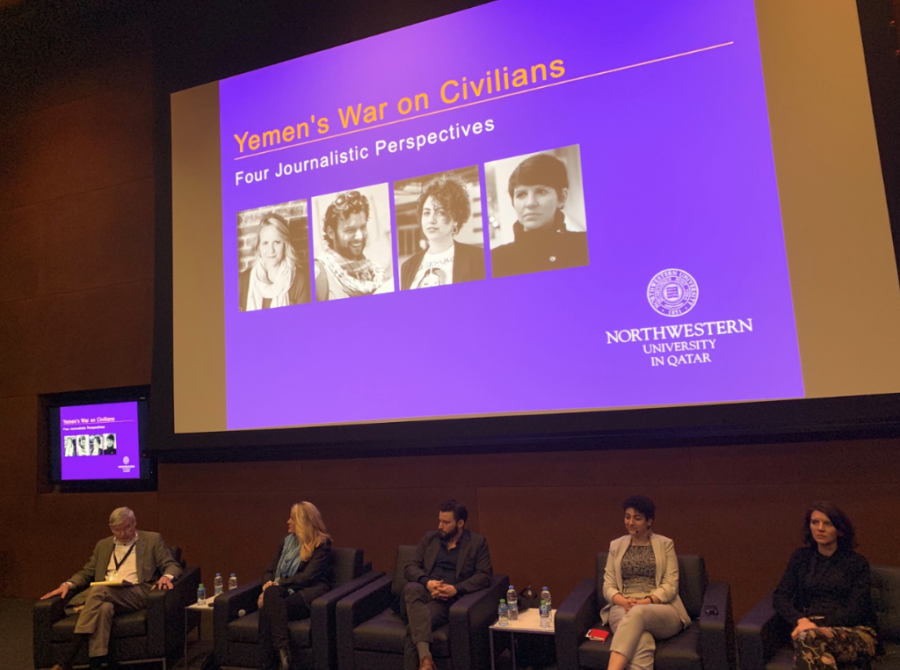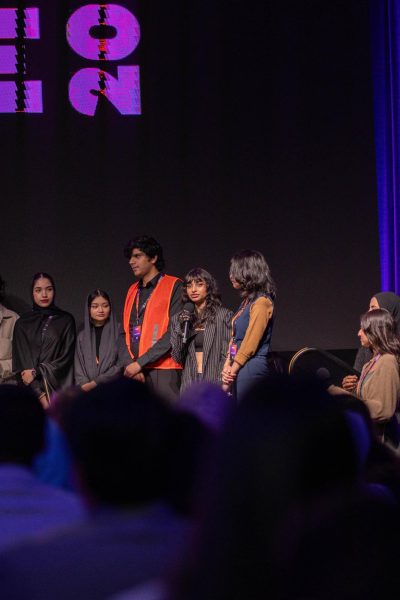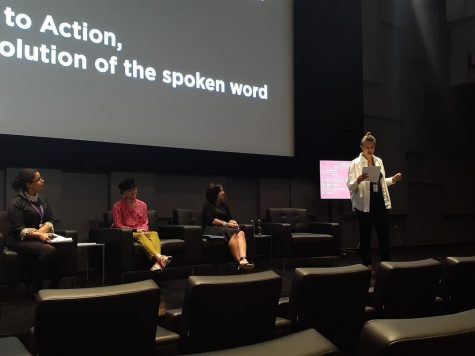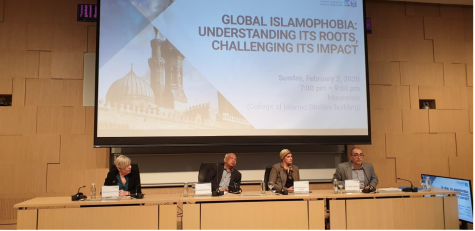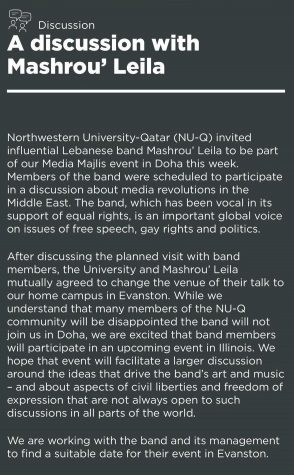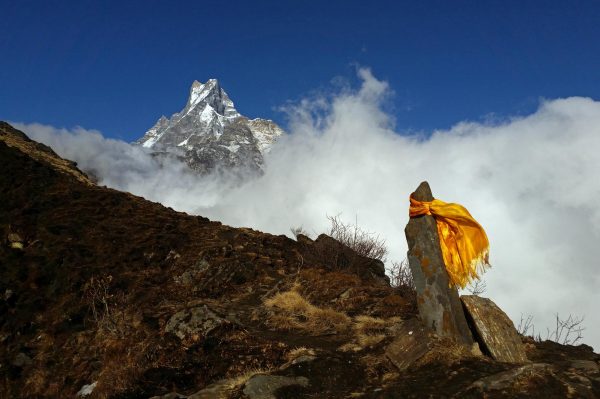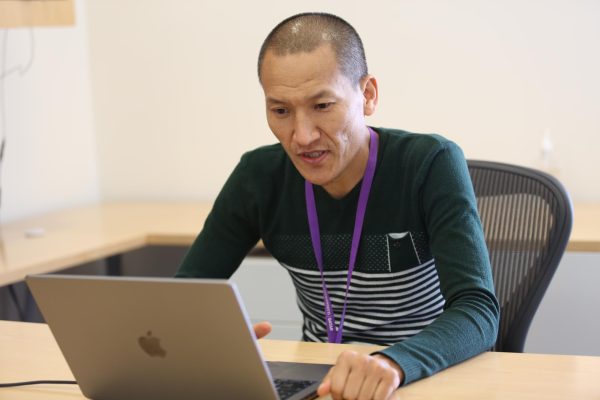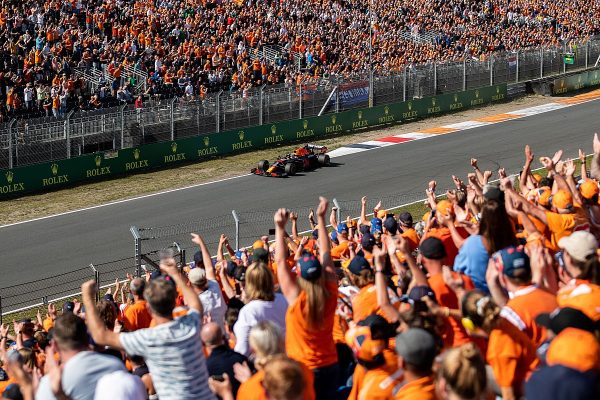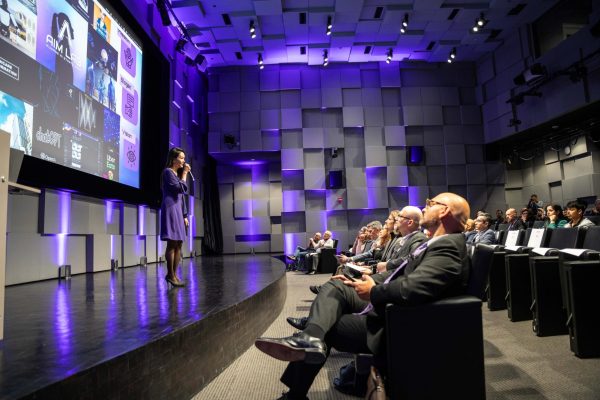Stories from Yemen: What happens when war targets civilians?
From indiscriminately killing innocent civilians to stripping away Yemeni heritage and identity, the ongoing war in Yemen, which the United Nations has called the world’s worst humanitarian crisis, has taken a heavy toll on civilians, a panel of journalists said yesterday.
At an event hosted by Northwestern University in Qatar (NU-Q), titled “Yemen: When War Targets Civilians,” Pulitzer Center on Crisis Reporting’s Marcia Biggs, Jeffrey E. Stern, Iona Craig, and NU-Q alum Mariam Al-Dhubhani shared the stories they covered in Yemen. The panel discussion was moderated by Tom Hundley, senior editor at the Pulitzer Center.
For Al-Dhubhani, a Yemeni native who produced a documentary titled “In the Middle” on a Yemeni soldier and a 360 Virtual Reality documentary about the disappearing jewelry-making business in the ancient city of Sana’a, telling stories about Yemen involves combining journalism with filmmaking.
“[Yemen] is home, and it’s a home that is not easy to go back to,” Al-Dhubhani said, adding that she’s willing to break rules and merge filmmaking with journalism in order to tell stories of people whose voices need to be heard.
In her short documentary “In the Middle,” Al-Dhubhani said she wanted to tell the story of a Yemeni soldier in a way that would make people connect with the person behind the uniform and not see him as any less of a person because he’s a soldier.
Because of the war, “he had to join the military, he had to stand at a checkpoint, he had to carry a gun, he had to see his friends die next to him, and that’s the reality of so many young people,” Al-Dhubhani said.
But the massive scale of the humanitarian crisis in Yemen since the war began in 2015 has likely made difficult for many people to grasp the magnitude of the catastrophe.
“When you have 20 million people in acute need of food aid, what does that look like? Feel like? How many stadiums full of people is that?” said Stern, who wrote a New York Times magazine story about how a bomb manufactured in Arizona destroyed a village in Yemen.
With recent reports on the killing of Qasim al-Raymi, who was the emir of Al-Qaeda, Craig said that there hasn’t been any focus on the mass civilian casualties, of at least 2000, that resulted in the process. Reports about this in the last couple of weeks in the United States have “basically whitewashed” the extent of the civilian casualties of the operation, Craig said. “And the only sort of tagline about that whole operation was that a Navy SEAL had died and not one mention of a Yemeni person being killed in the process,” she added.
The Trump Administration’s 2017 special forces raid in a remote village in Yemen was a previous attempt to target al-Raymi. After the Trump administration claimed in 2017 that the special forces raid had been highly successful, Craig took five days and a 1000-mile detour to the Yemeni village of al Ghayil to capture the extent of civilian casualties. She wrote a story on the casualties of the Trump administration’s Navy SEALs raid on al-Qaeda militants in the remote village in Yemen. At least 20 civilians, including 10 children under the age of 13 were killed, she said.
“The youngest was three months old, including an unborn child. The mother had been shot in the stomach,” said Craig.
The effects of the war on children – such as disability, early marriage and the destruction of educational facilities – have been devastating. In a multi-part series on the humanitarian crisis in Yemen for PBS NewsHour, Biggs talked to Gamaa Ali Ahmed, 14, who dropped out of school and got married to relieve her family’s financial burden. Unfortunately, her family is in a worse state now than it was before.
“Now my mother goes to work begging. My siblings stay hungry until she comes home at night. One day she brings food, the other day she doesn’t,” said Ahmed.
The series also chronicled the journey of e-NABLE Aden, an initiative spearheaded by five childhood friends in Yemen, to use 3D printing technology to provide prosthetic hands and arms to those in need. Furthermore, Al-Dhubhani underscored the importance of not defining Yemenis just by the circumstances of the ongoing conflict.
“Yes, we do have cholera. Yes, there’s death. Yes, we’re at war. But then, these are circumstances that hopefully will change and you can’t change them if the constant message is that we are this and that’s it, and we are nothing but this,” said Al-Dhubhani.



